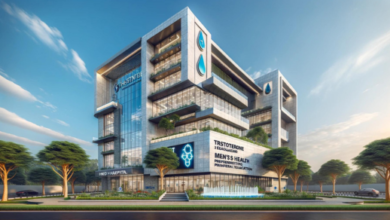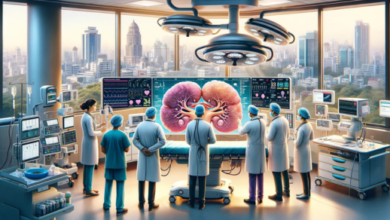How VA’s Remote Patient Monitoring Benefits Veterans

As healthcare continues to evolve, the Department of Veterans Affairs (VA) is embracing remote patient monitoring va as a transformative approach to care for veterans. RPM utilizes technology to collect and analyze health data from patients outside traditional clinical settings, providing a range of benefits that enhance the healthcare experience for veterans. This blog explores the significant advantages of RPM within the VA healthcare system and how it positively impacts veterans’ lives.
Improved Access to Healthcare
1. Convenience of Care
For many veterans, accessing healthcare can be challenging, particularly for those living in rural or underserved areas. RPM allows veterans to receive care from the comfort of their homes, reducing the need for travel to healthcare facilities. With the use of wearable devices and mobile health applications, veterans can monitor their health and transmit data to their healthcare providers without leaving their residences.
2. Reduced Wait Times
In traditional healthcare settings, veterans may face long wait times for appointments and follow-ups. RPM minimizes these delays by allowing healthcare providers to monitor patients’ health remotely, addressing issues in real time. This leads to quicker responses to health concerns, ensuring that veterans receive timely care.
Enhanced Patient Engagement
1. Empowerment Through Technology
RPM empowers veterans to take an active role in their healthcare. By providing access to real-time health data, veterans can track their vital signs, medication adherence, and overall health status. This transparency fosters a sense of agency and control over their health, leading to better adherence to treatment plans and lifestyle changes.
2. Strengthened Communication
RPM enhances communication between veterans and their healthcare teams. Through digital platforms, veterans can easily report changes in their condition, ask questions, and receive support. This continuous dialogue strengthens the patient-provider relationship, fostering trust and collaboration.
Better Health Outcomes
1. Proactive Disease Management
One of the most significant benefits of RPM is its ability to facilitate proactive management of chronic conditions. Veterans with conditions such as diabetes, hypertension, or heart disease can be monitored continuously. This enables healthcare providers to identify potential issues early and intervene before complications arise, leading to better health outcomes.
2. Personalized Care Plans
With the data collected through RPM, healthcare providers can create personalized care plans tailored to the unique needs of each veteran. This individualized approach ensures that treatment strategies are effective and aligned with veterans’ specific health goals and preferences.
Cost-Effectiveness
1. Reduced Hospitalizations
RPM can lead to significant cost savings by reducing the need for hospitalizations and emergency room visits. By monitoring health conditions remotely and addressing issues promptly, veterans are less likely to experience health crises that require intensive medical interventions.
2. Efficient Use of Resources
For the VA, RPM allows for more efficient allocation of healthcare resources. By minimizing in-person visits, healthcare providers can focus their time and efforts on patients who need immediate attention, optimizing the overall healthcare delivery system.
Enhanced Mental Health Support
1. Continuous Monitoring of Mental Health
RPM is not limited to physical health; it also plays a vital role in supporting veterans’ mental health. Many veterans experience mental health challenges, such as post-traumatic stress disorder (PTSD) and depression. RPM enables healthcare providers to monitor mental health symptoms and provide timely support and interventions.
2. Reduced Feelings of Isolation
For veterans who may feel isolated or disconnected from their support systems, RPM fosters a sense of community and connection. Regular check-ins with healthcare providers and access to mental health resources can help combat feelings of loneliness and promote overall well-being.
Challenges and Solutions
While the benefits of RPM are significant, there are challenges to its implementation:
1. Technology Accessibility
Not all veterans have equal access to the technology required for effective RPM. The VA must ensure that devices and internet connectivity are available to all veterans, providing support and training as needed.
2. Data Privacy and Security
As with any digital health initiative, privacy and data security are paramount. The VA must implement robust measures to protect veterans’ sensitive health information and comply with regulations regarding data handling.
Conclusion
The integration of Remote Patient Monitoring into the VA healthcare system is revolutionizing the way veterans receive care. By improving access to healthcare, enhancing patient engagement, promoting better health outcomes, and providing cost-effective solutions, RPM is proving to be a game-changer for veterans. As the DocVA continues to innovate and expand its RPM initiatives, veterans can look forward to a healthcare experience that is more responsive, personalized, and empowering. Through RPM, the VA is not only meeting the healthcare needs of veterans but also honoring their service by providing them with the quality care they deserve.





